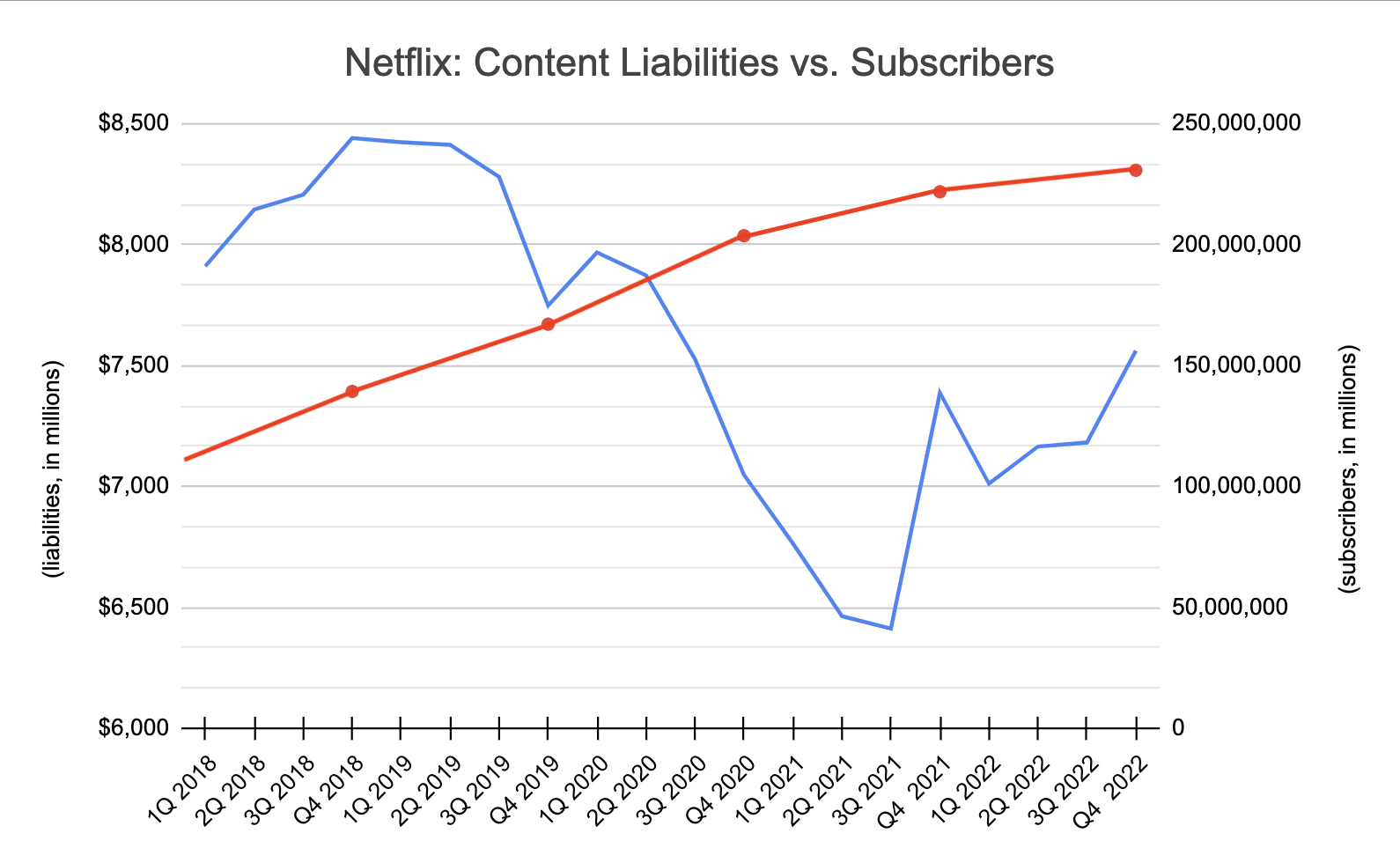Everyone loves to talk about Netflix ($NFLX), either because you want to gab about some great new show you discovered (Kaleidoscope, people!) or you want to complain that there’s nothing on Netflix (us, immediately after finishing Kaleidoscope).
So when the company filed its 2022 annual report the other day, we decided to take a look at the two numbers behind those concepts: total content liabilities Netflix has, for programs it has committed to purchasing; and total number of paying subscribers.
Figure 1, below, shows what we found over the last five years. Fascinating to see that content liabilities (in blue) plunged in 2020 and 2021, presumably because film production shut down during most of the pandemic. When life and art began returning to normal in late 2021, those content liability numbers started to climb again.

On the other hand, subscriber growth — which is the most important factor to determine revenue, let’s remember — is chugging upward (in red) at a pace that’s steady, but by no means brisk. Total paying subscribers stood at roughly 110 million at the start of 2018. It was 230.7 million at the end of 2022, an increase of 108 percent. If you squint, you can see that the pace of subscriber growth increased in 2020 while we were all confined to quarters, but since then subscriber growth has decelerated.
One can see the strategic choices that emerge from these trends. Either Netflix trims its commitment to future programming; or it accelerates subscriber growth massively with, um, pixie dust or something; or it fiddles with its pricing options to raise more revenue from existing subscribers and the new subscribers trickling in over the years to come.
Indeed, Netflix has already started to pursue that third choice, with its idea of a low-cost subscription offering that includes advertising. The company launched that subscription product in November, reportedly to lackluster interest so far. (Netflix hasn’t broken out that advertising tier as a separate operating segment, nor does it report advertising revenue as a separate line item.)
So the other choices are fewer major commitments to content in the future (Bridgerton fans will riot if Netflix goes that route) or ramping up subscriber growth massively. Since just about every household in North America that wants Netflix already has Netflix, that also means said subscriber growth will need to be driven by global markets.
Something to think about when you see all those foreign shows in your feed.
